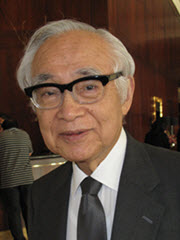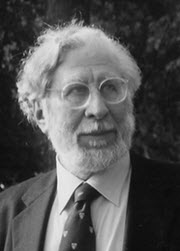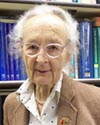With the sad news in ICNAPedia of the passing of Dr Masaya Segawa, close upon earlier news of those of Dr Yukio Fukuyama’s and one of ICNA’s mentors, Dr Heinz Prechtl’s, ICNA has lost two more among the dwindling number of its founding members. As a (still) survivor, let me honor their fundamental contributions to our field, and allow me a few personal memories of Drs Fukuyama and Segawa dating back to Toronto 1975. Both these Japanese colleagues epitomize the clinician-scientist, today an endangered species because their important discoveries came from close observation of their patients, Dr Fukuyama’s from the vantage point of academe—The Women’s Medical College in Tokyo, Dr Segawa’s from the private practice of neurology with the eye of a researcher in whom every new patient provides the potential opportunity for a new discovery.
 Dr Yukio FukuyamaToday’s child neurologists all know of Dr Fukuyama because of his description of the Fukuyama muscular dystrophy1, perhaps the first recognized muscle/brain disease. They will be aware of his multiple contributions to childhood epilepsy, in particular infantile spasms, and to many other neufologic disorders of children. They may not appreciate, if they come from the West, that Dr Fukuyama was the father of child neurology first in Japan, then Asia. They are unlikely to be aware that he founded the pioneer Japanese journal of child neurology, then Brain and Development, which he edited for many years. His modesty belied his powerful world wide influence for which we are all grateful.
Dr Yukio FukuyamaToday’s child neurologists all know of Dr Fukuyama because of his description of the Fukuyama muscular dystrophy1, perhaps the first recognized muscle/brain disease. They will be aware of his multiple contributions to childhood epilepsy, in particular infantile spasms, and to many other neufologic disorders of children. They may not appreciate, if they come from the West, that Dr Fukuyama was the father of child neurology first in Japan, then Asia. They are unlikely to be aware that he founded the pioneer Japanese journal of child neurology, then Brain and Development, which he edited for many years. His modesty belied his powerful world wide influence for which we are all grateful.
My first encounter with Dr Segawa was the five abstracts he submitted to the program committee of the first International Child Neurology Congress in 1975. What to do with such a prolific member whose name was new to me? It is to ICNA members that he presented the first report of dystonia with diurnal fluctuations2, now DTY 5a or Segawa disease. It is Dr Ouvrier from Australia who put it on the world map with his 1978 report of 3 cases in the 1978 Annals of Neurology3, in which he credits Dr Segawa with his 1976 princeps report of 9 Japanese cases, likely those he told us about in Toronto. A dramatically treatable formerly disabling neurologic disorder: what a unique and magnificent contribution! Dr Segawa attended every ICNC and many neurology meetings in the USA and elsewhere, often with his charming colleague Dr Yoshiko Nomura.
Did you know that, a long-time scholar of brainstem and sub-cortical nuclei and their neurotransmitters, Dr Segawa had long-standing novel ideas about the 
When I was in training and a fledgling teacher of child neurology, we were all imbued with Dr Prechtl from Groningen in the Netherlands’ observations of the complex behavioral repertoire of the newborn, and later the fetus. He came to his pioneering research from having studied ethology with his award-winning mentor, Nobelist Konrad Lorenz, famous for his studies of maternal imprinting in newly-hatched goslings. Prehtl’s work in human neonates spawned neonatal child neurologists in Paris, London, Canada, and elsewhere to realize that babies are not insensate blobs and deserve respect and protection from pain.
 Heinz FR PrechtlIt is Dr Prechtl—whom I never met—who spurred me to bring my 4 week old younger son Peter, dressed in a red terry jumpsuit, to demonstrate to the 2nd year class of Einstein students the behavioral repertoire, including supported ambulation, of the infant. ICNA has been blessed from the start—and still is—with outstanding clinician-investigators. May the deluge of unyielding computerized reports that dictate what they are to see not kill the desire of young doctors to observe and record what the clinic privileges them to observe on their own and share with colleagues around the world.
Heinz FR PrechtlIt is Dr Prechtl—whom I never met—who spurred me to bring my 4 week old younger son Peter, dressed in a red terry jumpsuit, to demonstrate to the 2nd year class of Einstein students the behavioral repertoire, including supported ambulation, of the infant. ICNA has been blessed from the start—and still is—with outstanding clinician-investigators. May the deluge of unyielding computerized reports that dictate what they are to see not kill the desire of young doctors to observe and record what the clinic privileges them to observe on their own and share with colleagues around the world.
As well known, many of the truly revolutionary scientific discoveries, from Galen to Lister, Semmelweiss, Pasteur, and others were the gifts of individual patients to their astutely observing caring physician, not the statistical products of meta-analyses of compiled international case series, or the discovery of the -nth mutation increasing slightly the risk of some behaviorally-defined syndrome, however important for treatment such endeavors they may be.
Author:
 |
Isabelle Rapin This email address is being protected from spambots. You need JavaScript enabled to view it.This email address is being protected from spambots. You need JavaScript enabled to view it. +1 845 757 5770 4905 Route 9G, Tivoli NY 12583, USA |
Ref:
1. Y. Fukuyama, M. Kawazura, H. Haruna. A peculiar form of congenital progressive muscular dystrophy. Report of fifteen cases Paediatr Univ Tokyo, 4 (1960), pp. 5–8
2. Segawa M, Hosaka A, Miyagawa F, Nomura Y, Imai H. Hereditary progressive dystonia with marked diurnal fluctuations. Adv Neurol 1976;14:215–33
3. Ouvrier, R. A. (1978), Progressive dystonia with marked diurnal fluctuation. Ann Neurol., 4: 412–417. doi: 10.1002/ana.410040505
Read More